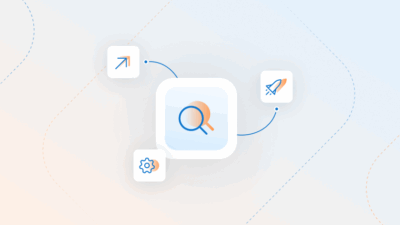As we know, online search has redefined the traditional marketing funnel. It’s no longer just an inverted pyramid, narrowing from awareness to purchase. Google’s study of thousands and thousands of opt-in users’ clickstream data has shown that as people search online, search results can lead them down non-linear paths of consideration and intent, potentially widening and narrowing their journey multiple times along the way.
Think with Google’s recent report, “How search enables people to create a unique path to purchase,” is a deep dive into the journeys of two dozen customers exploring products in seven verticals. The most fascinating aspect of this report is how unique each customer’s journey is, even when searching for the same product or within the same category.
For brands, the challenge is how to meet customers at every point along their journey, to answer their questions helpfully — and to anticipate where they’re headed next. Whether you’re selling software, SaaS, or digital products, follow these three tips to make sure your brand remains top of mind during the entire search process.
1. Help solve your customer’s problems.
Regardless of how you may feel about Google’s search engine, many customers view search as a powerful way to find a solution to an existing problem. This is even more evident with the rise of question-based search queries. A photographer who’s in the market for an image editing tool is wrestling with one very specific problem – finding a software solution that is best equipped with image enhancement and photo editing functionality.
Some sample search queries this photographer might use include:
- “Best photo editing software”
- “Top ten photo editing software”
Key takeaway:
In this case, driving the potential customer to a purchase decision involves making sure your photo editing software shows up in the photographer’s search engine result page. This involves optimizing your product descriptions or any related content to rank for the search phrases listed above. Additionally, your customer may already be aware of your software solution and is looking to validate their purchase decision. Search also plays a role in this stage by for example giving your customer greater context around your software’s capability with existing tools on the market.
2. Educate prospects on the benefits of your software.
As mentioned in the previous example, some searchers may already have a general idea of what exactly they are looking for – but may not have decided on additional criteria to further refine their search. In this case, any additional search queries would serve to narrow down just exactly what the customer is searching for.
3. Prioritize site speed to stay ahead.
In today’s digital journeys, a specific search should always be thought of as a jumping off point for exploration – the results can affirm the customer’s interest or cause him to reevaluate his interests entirely. Speed or more specifically – you’re company’s ability to readily and quickly deliver the next piece of information necessary in your customer’s journey will be instrumentally in helping to close your next sale.
Key takeaway:
Whether it’s another piece of educational content or simply providing more information to further strengthen your customer’s purchase intent, brands must deliver this information in a fast and frictionless way. Consider optimizing your site for mobile experiences as well as investing in machine learning and automation to help your company “predict” the next point of contact and move your shopper further down the sales funnel.
How to use these insights
These insights show just some of the ways that online search behavior can affect the path to purchase. Search can be a long, winding road with lots of surprising twists and turns, filled with discovery. That’s why it’s so important to stay abreast of trends and competitors to build a search strategy that considers relevance but is optimized for discovery. As Think with Google’s report emphasizes, SaaS businesses must be there for shoppers at every step of the way with useful content to turn them into customers and keep them.
Lastly, once you’ve managed to attract visitors to your site, don’t let a piece-wise ecommerce solution hold your company back from achieving your true revenue potential. FastSpring’s full-service ecommerce platform helps reduce cart abandonment and grow sales by:
- Allowing customers to confidently check out directly from the product page.
- Supporting over 20+ payment options including Credit Card, Paypal, ApplePay, ACH, and more.
- Skip account creation and quickly check out in a few steps as possible.
Interested in learning more about how FastSpring can help boost the conversion rate on your online store? Click here to speak with one of our platform specialists!









